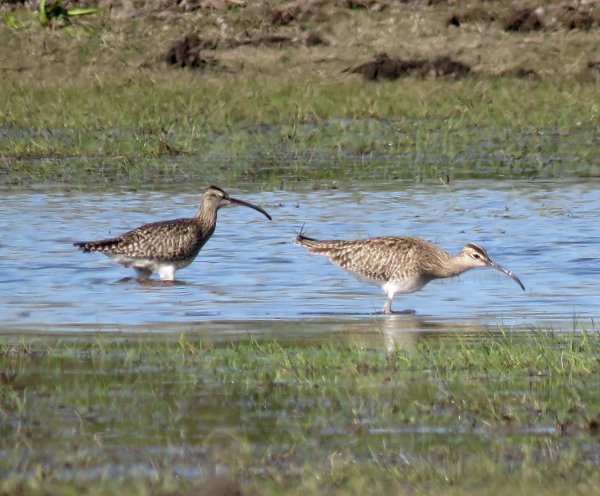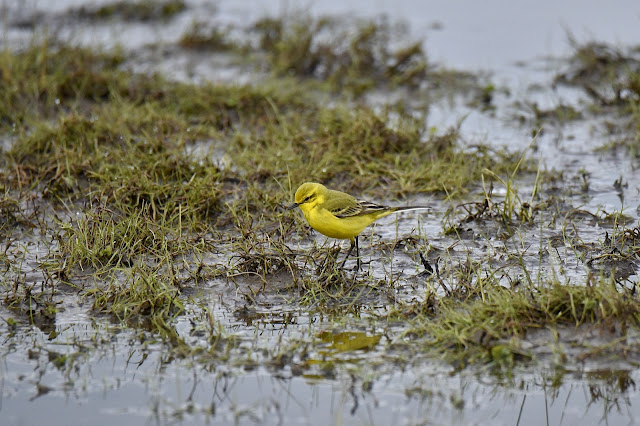Things have slowed down noticeably over the last few days. The truth is that spring passage action often peaks towards the end of April and we are probably now over the hump. Not that there isn't lots to play for still: what we lose in numbers tends to be made up for in quality with rarer birds starting to turn up as we enter May. We finally got some rain in the nick of time and with some more showers forecast over the next few days we should at least have some sort of floods still around into May.
In terms of things to report, as I said, it's been a quiet few days. On the wader front, first thing on Saturday morning there were 4 Whimbrel and the Bar-tailed Godwit. Gradually these all left with just one lingering Whimbrel which stuch around until mid week. There have been a couple of Oystercatchers and a few Little Ringed Plover. The smart male Ruff turned up again and spent some more time on the floods. With the rain today Thomas Miller and I were both down at the floods hoping for a fall of some kind though the only birds there were five Little Ringed Plover and a summer plumage Dunlin.
 |
| The smart male Ruff, courtesy of Thomas Miller |
 |
| The lingering Whimbrel, courtesy of Thomas Miller |
Ducks are almost all gone though there have been a pair of Shelduck and the pair of Egyptian Geese are still knocking around. Apart from that there is just one lingering drake Wigeon.
There has been a nice passage of Wheatear over the last few days on the Meadow, probably the Greenland subspecies judging by the later arrival date. Nick Boyd also heard our first Cuckoo up near the King's Lock area and Steve Goddard got our first Swift of the year over Wolvercote.
I've not discussed Warblers much of late: the usual species have arrived back in the usual order and Burgess Field is currently filled with their wonderful song. It's always worth a visit at this time of year as birds race to establish territories and sing their hearts out. Soon they will be knuckling down to the business off raising their young and it goes much quieter. We've had the Whitethroat and Garden Warblers arrive and a Lesser Whitethroat was heard by Nick Boyd up by Hook Meadow. There seem to be a couple of Cetti's Warblers along the canal - it's nice to have this species back again on the patch as they seem to come and go. The first Reed Warbler is back in the Trap Grounds reedbed and Phil Barnett had a Sedge Warbler in Burgess Field. So, apart from Grashopper Warbler, which has sadly become very rare on the Patch just in the last few years, we now have the complete Warbler set. Also in Burgess Field though not a Warbler, there was yet another Redstart with a female that was seen on Tuesday morning.
Wagtail numbers are still good though past their peak now with about a dozen Yellow Wagtails on the floods today. There are still some birds which look good for female Blue-headed Wagtail and female Channel Wagtail though both Thomas and I are starting to find that the more you look at them the less sure you are! We have noticed that late afternoon is the best time for the wagtails with peak counts usually to be had then.
 |
| Female Channel Wagtail (?) courtesy of Thomas Miller |
So, as we knock on the door of May what might we still reasonably expect? On the wader front I have three on my wish list: Wood Sandpiper, Sanderling and Grey Plover. Apart from waders, Hobby, Spotted Flycatcher, Whinchat and Tree Pipit are all still needed for the year list. Moreover, the exciting thing about May is that we could get something much rarer - you never know!


















